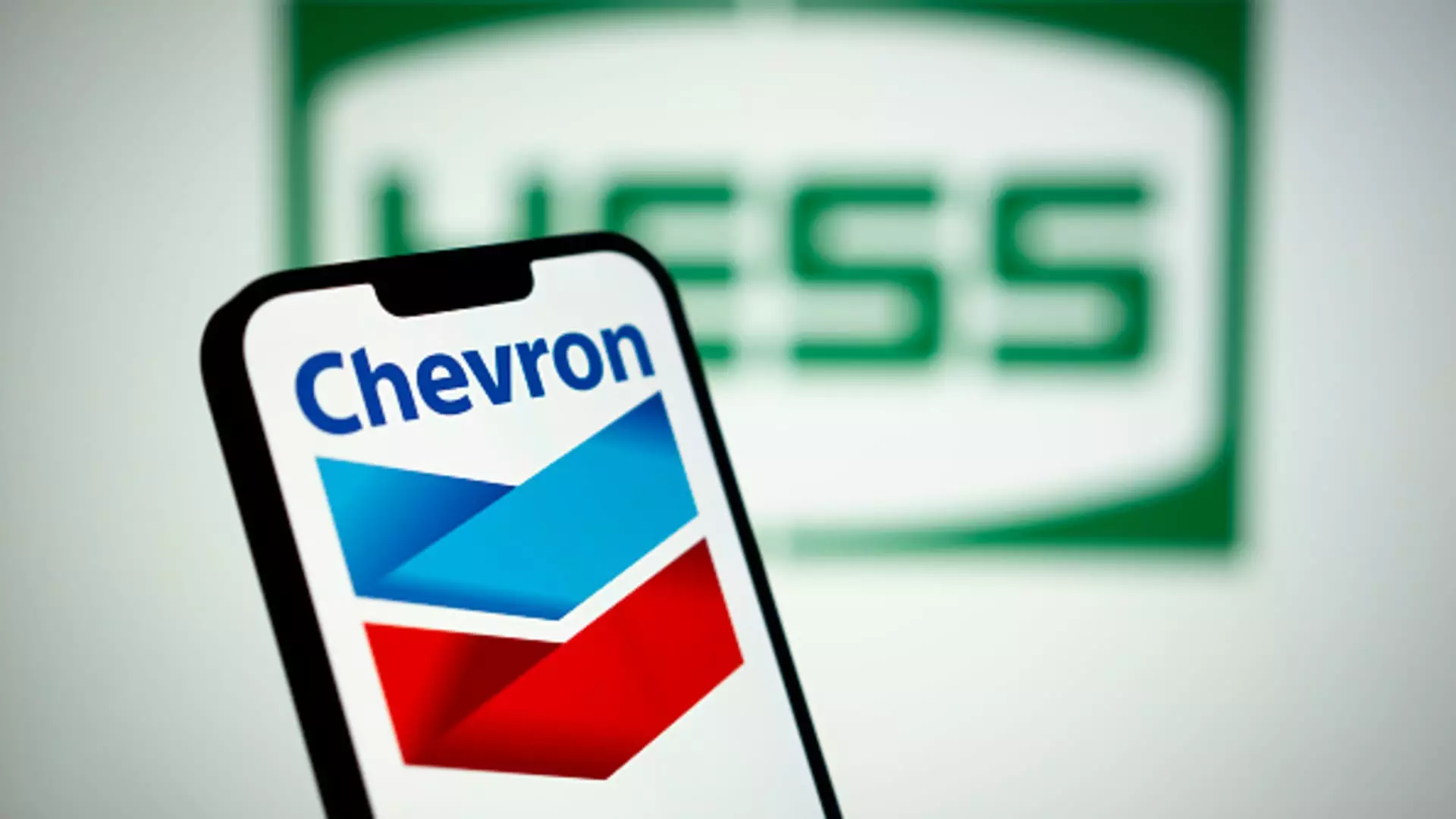Chevron’s recent financial disclosures for the third quarter showcase a company grappling with both triumphs and challenges. Despite successfully surpassing Wall Street’s predictions for earnings and revenue, the firm’s overall profitability demonstrated a significant downturn compared to the same timeframe last year. The reported earnings per share (EPS) stood at $2.51, slightly ahead of the anticipated $2.43, while total revenue reached $50.67 billion, exceeding expectations of $48.99 billion. Yet, the stark reality remains: net income fell to $4.49 billion, a 31% plunge from $6.53 billion in the previous year, highlighting a confluence of factors—declining margins, lower product prices, and the absence of one-time tax benefits.
The third quarter’s financial outcomes spotlight the intricacies of the global oil market. Lower margins stemming from refined product sales and an overall drop in commodity prices have significantly impacted Chevron’s earnings. The oil major’s revenue of $50.67 billion, while besting analysts’ forecasts, still marked a 6% decrease from $54.1 billion in the third quarter of 2022. As a response to these ongoing pressures, Chevron is planning strategic asset sales aimed at consolidating its operations—a move expected to finalize by late 2024. This decision reflects a broader trend in the industry where major oil companies reevaluate their portfolios to bolster resilience against fluctuating market conditions.
Commitment to Shareholders Amidst Uncertainty
Despite the financial hiccups, Chevron remains committed to returning value to its shareholders, announcing a record distribution of $7.7 billion in the last quarter. This distribution included $4.7 billion dedicated to share buybacks and $2.9 billion allocated for dividends. This dedication to shareholder returns, even amid a challenging economic milieu, indicates Chevron’s resolve to maintain investor confidence. However, the company’s stock has not seen significant gains this year, remaining largely stagnant and lagging behind the S&P 500 energy sector, which has experienced a growth of over 6%.
Chevron’s strategic future includes not only asset divestitures but also ambitious cost-saving initiatives aimed at reducing expenditures by $2 billion to $3 billion from 2024 through the end of 2026. This forward-thinking approach is critical as the company seeks to navigate the complexities of its ongoing acquisition of Hess Corp. Although the Federal Trade Commission has allowed the deal to proceed, complications remain, particularly due to a dispute with Exxon Mobil over purported rights to Hess’s oil assets in Guyana. The outcome of arbitration regarding this conflict holds significant implications for Chevron’s acquisition endeavors.
In summation, Chevron’s third-quarter results present a landscape marked by resilience, strategic adjustments, and looming uncertainties. The firm’s ability to outperform earnings expectations while simultaneously experiencing a downturn in profitability underscores the volatile nature of the oil industry. As Chevron navigates impending challenges, including its asset management strategies and acquisition hurdles, the continued commitment to shareholder returns may serve as a stabilizing force during turbulent times. Investors and stakeholders alike will be keen to observe how these dynamics unfold in the coming months, with the hope that strategic measures will yield a more favorable outlook for the oil giant.

